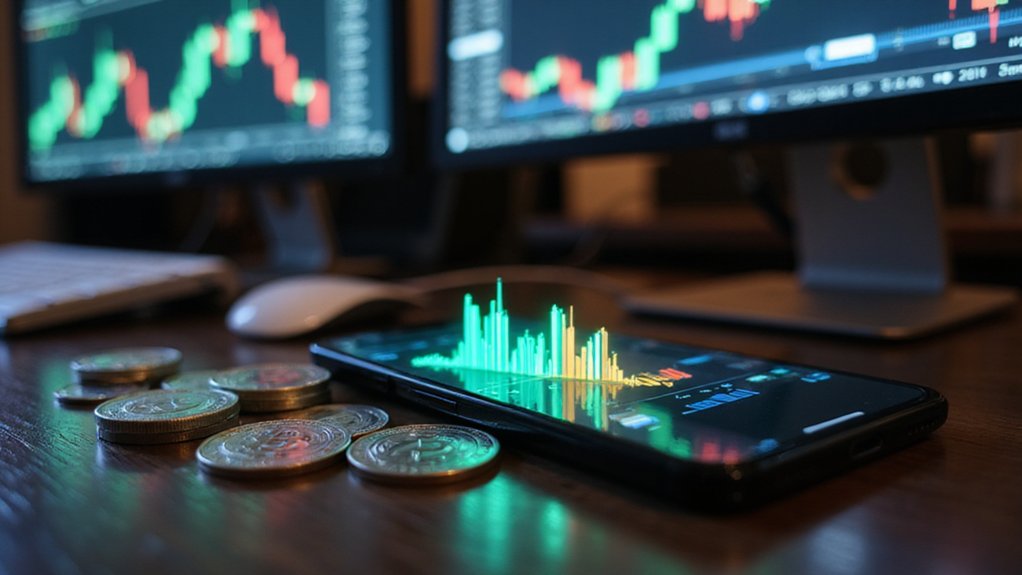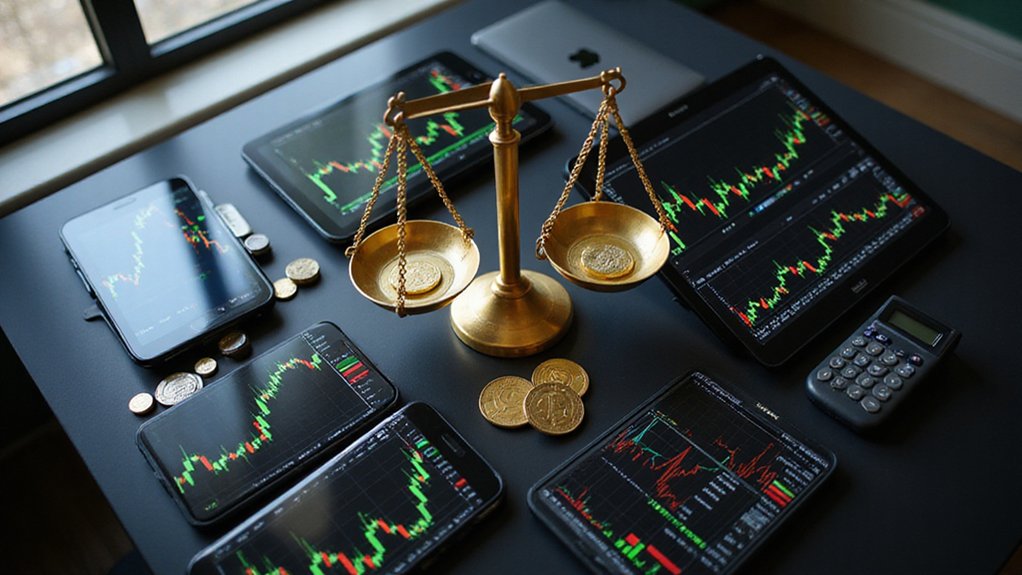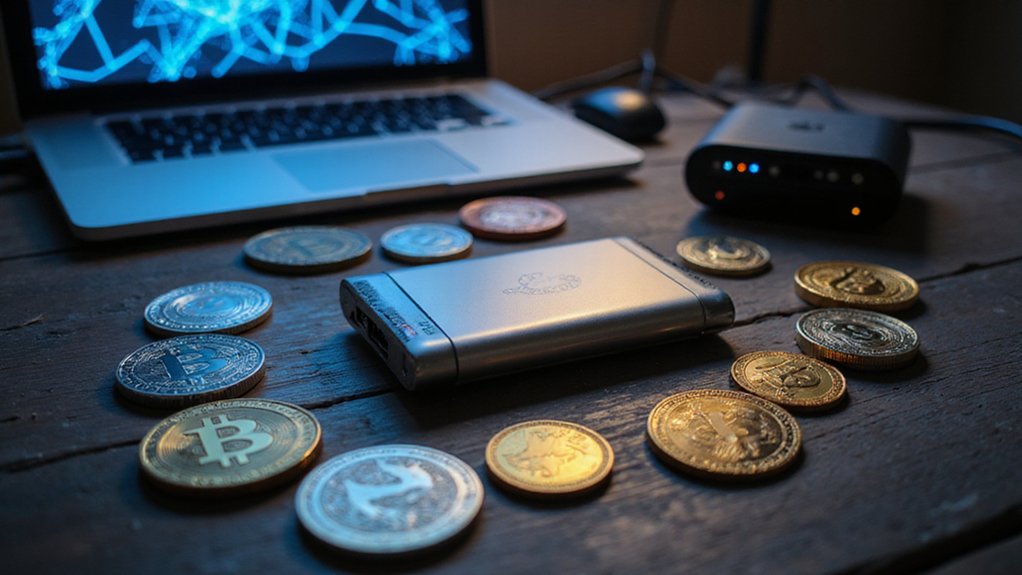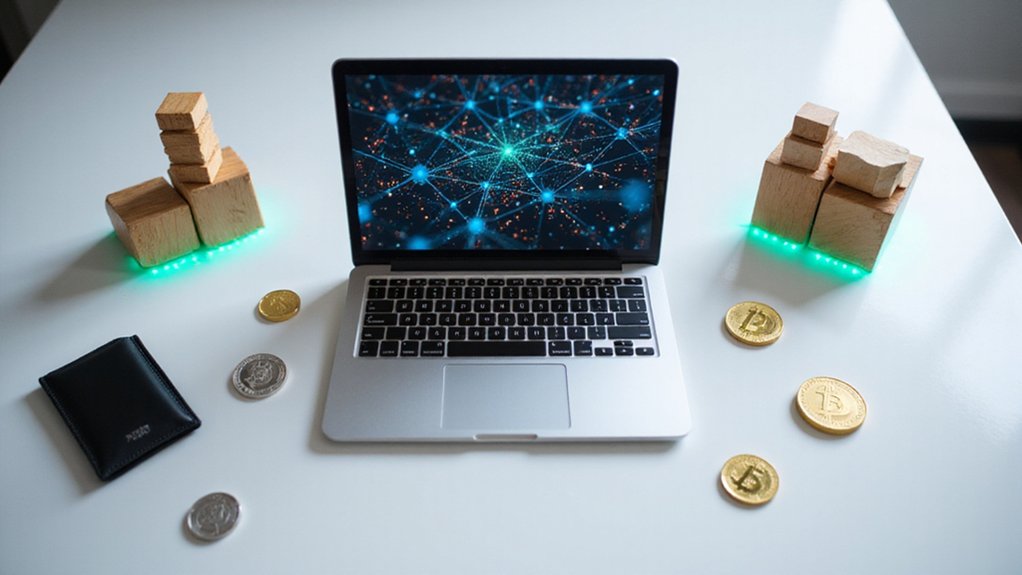Trading volume measures the total number of cryptocurrency coins or tokens exchanged within a specified timeframe, typically 24 hours, serving as a vital barometer of market participation beyond mere price movements. High volume accompanies robust interest and confirms trend strength, while anemic volume suggests weak conviction and potential reversals. Analytical tools like Volume-Weighted Average Price (VWAP) and On-Balance Volume (OBV) help traders interpret this data effectively. Understanding volume patterns reveals deeper insights into market psychology and liquidity dynamics.

The cryptocurrency markets, with their characteristic blend of technological innovation and speculative fervor, operate on principles that would seem familiar to any seasoned trader—yet newcomers often fixate on price movements while ignoring one of the most revealing metrics available: trading volume. This metric, representing the total number of coins or tokens exchanged between buyers and sellers within a specified timeframe (typically 24 hours), serves as a window into market psychology that price alone cannot provide.
Trading volume functions as both a barometer of market participation and a predictor of price reliability. High volume indicates robust interest and participation, creating the liquidity necessary for traders to execute transactions without substantially impacting prices—a consideration that becomes painfully relevant when attempting to exit positions in thinly traded assets. Conversely, price movements accompanied by anemic volume suggest weak market conviction, often foreshadowing reversals that catch momentum traders off guard.
The relationship between volume and price validation operates on both absolute and relative terms. Significant price changes supported by substantial volume confirm trend strength, while identical price movements on low volume raise questions about sustainability. Volume spikes frequently precede breakouts, though distinguishing between genuine market enthusiasm and orchestrated manipulation requires careful observation of trading patterns across multiple exchanges. High trading volume directly impacts a blockchain network’s transaction throughput, as increased activity demands greater processing capacity to maintain system reliability and user experience.
Market participants can leverage various analytical tools to interpret volume data effectively. Volume-Weighted Average Price (VWAP) and On-Balance Volume (OBV) provide sophisticated frameworks for understanding the relationship between price action and trading activity, while simple volume bar charts reveal trends that moving averages can further clarify. The Money Flow Index serves as another valuable tool, ranging from 0 to 100, where readings above 80 suggest overbought conditions and values below 20 indicate oversold territory.
External factors substantially influence trading volumes, from regulatory announcements and partnership developments to whale activity and exchange incentives. The latter particularly warrants skepticism, as trading competitions and artificial volume generation through wash trading can distort genuine market signals. Cryptocurrency trading volume analysis can be conducted across all exchanges combined or focused on individual platforms to better understand market dynamics.
Understanding the distinction between trading volume and market capitalization proves essential for proper analysis. While market cap reflects total circulating value, trading volume indicates actual market liquidity and trend reliability—metrics that don’t necessarily correlate. A high-cap cryptocurrency experiencing minimal trading volume might suggest institutional holdings rather than active market engagement, affecting both volatility expectations and exit strategies.
Frequently Asked Questions
How Does Trading Volume Affect Cryptocurrency Price Predictions and Technical Analysis?
Trading volume serves as cryptocurrency markets’ pulse—high volumes typically validate price movements while low volumes suggest tepid conviction (and potentially unreliable signals).
Wavelet analysis reveals this relationship shifts across timeframes, complicating predictions.
Paradoxically, higher variance from volume spikes often precedes lower returns, particularly in illiquid altcoins.
Real-time volume feeds enhance machine learning models’ responsiveness, while correlation with social sentiment creates feedback loops that astute traders exploit for momentum identification.
What’s the Difference Between Spot Trading Volume and Derivatives Trading Volume?
Spot trading volume represents actual cryptocurrency purchases and transfers—real ownership changing hands with immediate settlement. Derivatives volume, meanwhile, tracks contracts betting on price movements without underlying asset ownership.
The distinction matters considerably: derivatives now dominate roughly 79% of global crypto volume, exceeding spot by threefold.
This disparity reveals traders’ preference for leveraged speculation over genuine asset accumulation, transforming what began as digital currency into sophisticated financial instruments divorced from their foundational purpose.
Can Fake or Wash Trading Artificially Inflate Cryptocurrency Trading Volumes?
Fake and wash trading can dramatically inflate cryptocurrency volumes, with studies suggesting 68-95% of reported exchange activity may be artificial.
Bots execute meaningless back-and-forth trades while insiders wash trade identical assets to themselves, creating illusory market activity.
These techniques boost exchange rankings and attract unwitting investors, though blockchain analysis increasingly exposes such manipulation—a rather inconvenient development for platforms whose “bustling” markets suddenly appear suspiciously quiet under scrutiny.
Which Cryptocurrency Exchanges Provide the Most Accurate Volume Data?
Binance, Bybit, and OKX consistently provide the most reliable volume data, with major aggregators like CoinMarketCap and CoinGecko implementing sophisticated anti-wash trading filters to verify legitimacy.
Gate.io and Bitget have emerged as surprisingly credible sources, despite their rapid ascent.
These platforms maintain robust API transparency and institutional-grade reporting standards—though one wonders why establishing basic data integrity remains such an achievement in this ostensibly revolutionary financial ecosystem.
How Does Low Trading Volume Impact My Ability to Buy/Sell Quickly?
Low trading volume creates a frustrating paradox: traders want speed precisely when markets won’t cooperate.
Thin order books mean larger spreads between bid and ask prices, while insufficient liquidity forces orders to execute across multiple price levels—driving up costs through slippage.
Those急于exit positions discover that market depth evaporates when needed most, transforming what should be swift transactions into prolonged, expensive ordeals that test both patience and portfolio performance.









